Gigabyte MZ01-CE0 Management
Since we have been following Gigabyte Server products for many generations, the Gigabyte MZ01-CE0 has a notable change on the management side. Traditionally, Gigabyte has utilized the Avocent MergePoint management solution for its IPMI. Here is an example from our Gigabyte R270-T61 2U Server Review.
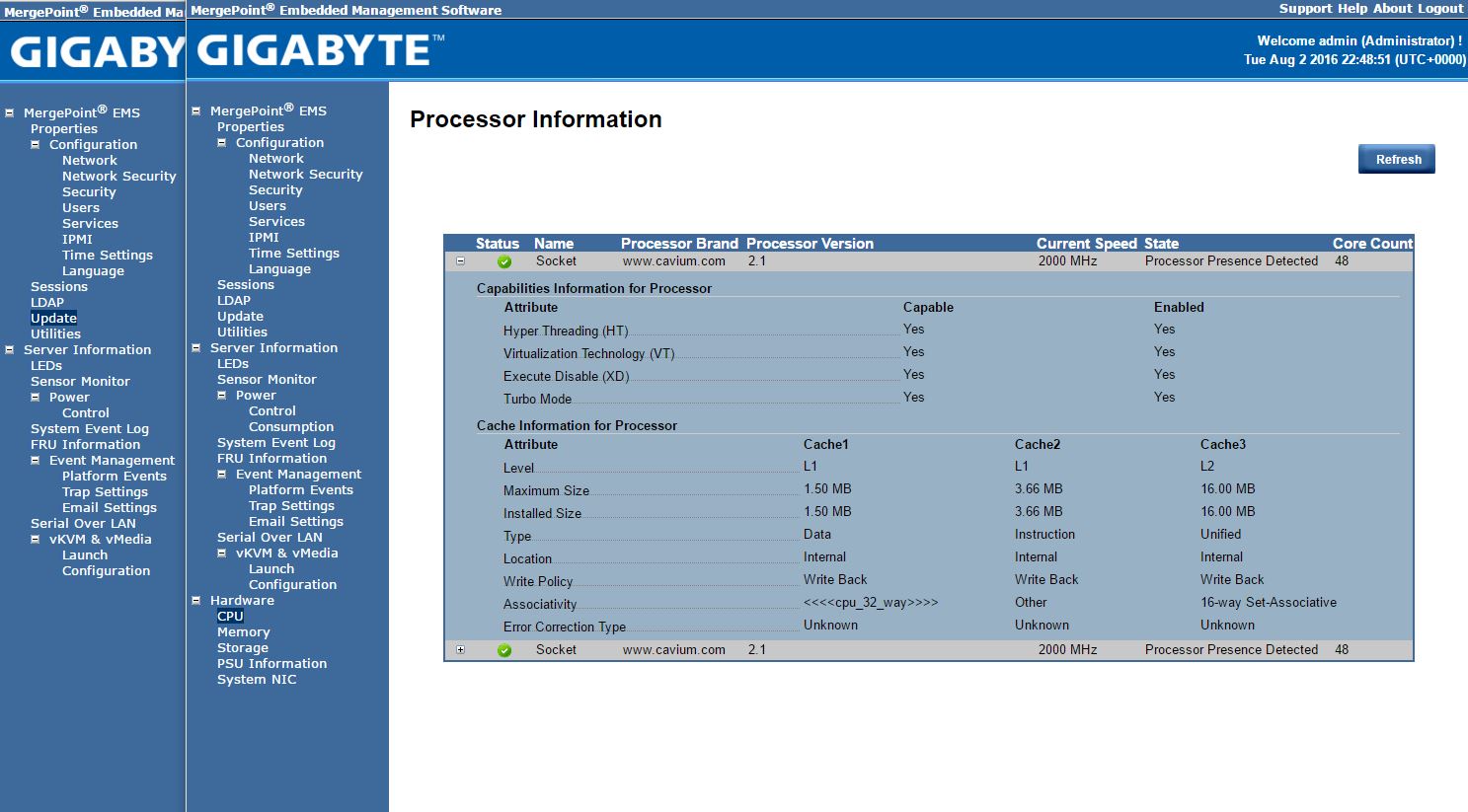
With the Gigabyte H261-Z60 review, a 2U 4-node AMD EPYC platform, we saw a change to the Megarac SP-X BMC firmware. This is a side-by-side showing the firmware update page of both. As you can see, the SP-X version looks like a significantly more modern design.
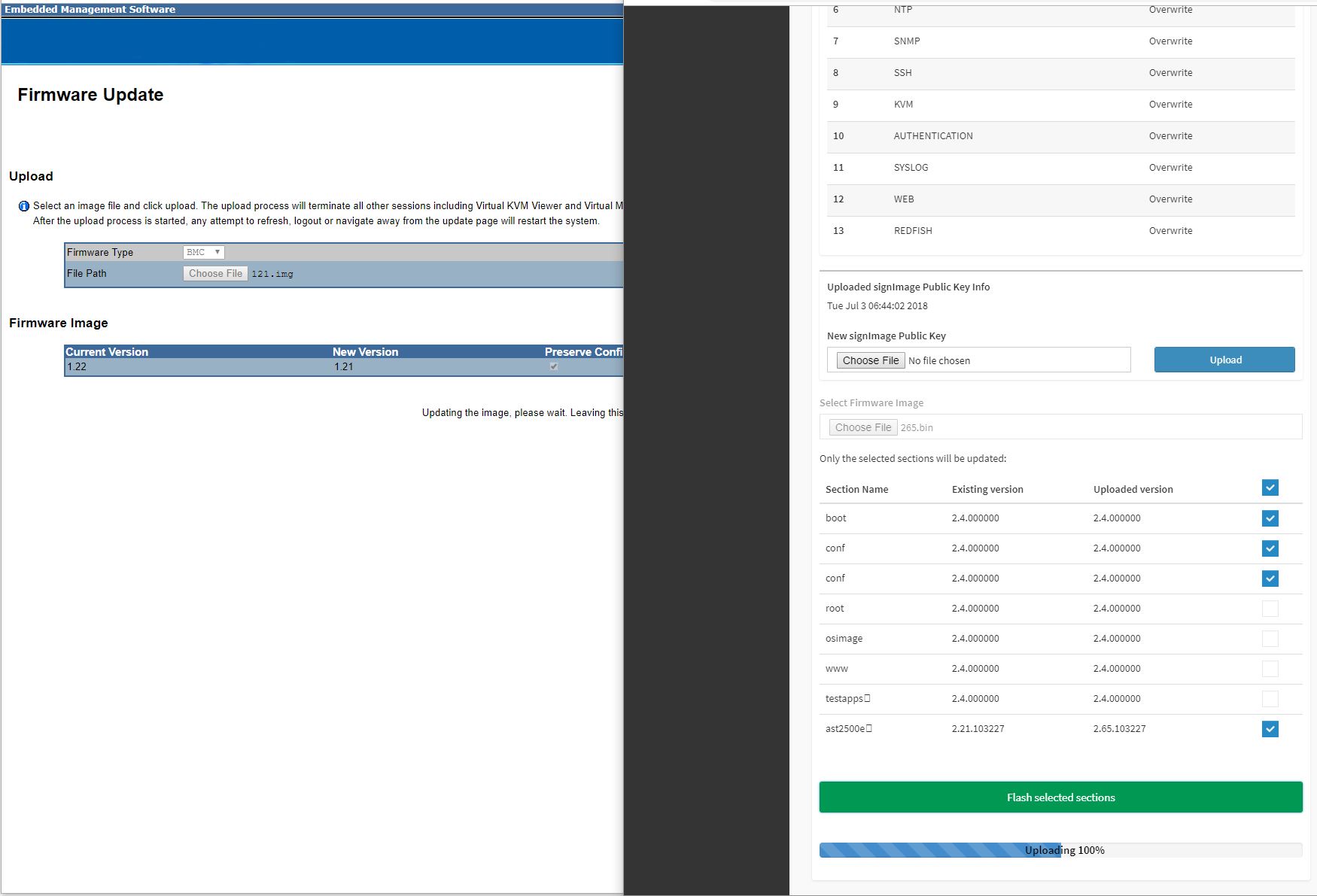
As an example, here is the dashboard which looks like a modern HTML5 web application and a step beyond the Avocent MergePoint solution we have seen previously.
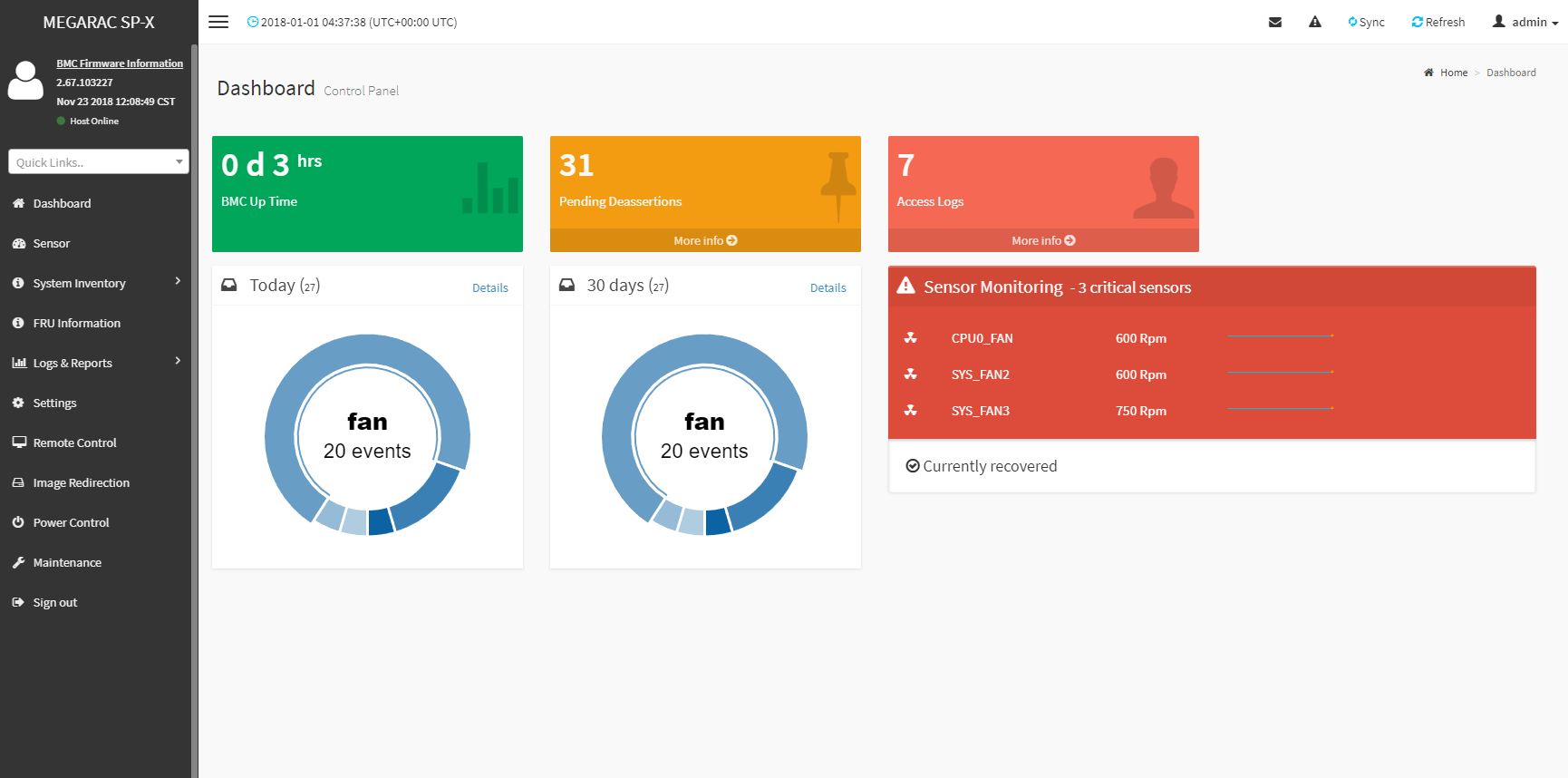
Remote iKVM is HTML5 based by default and works well. That includes remote media functionality and came included with our motherboard. Compared to Dell EMC’s iDRAC, HPE iLO, and Lenovo XClarity, the Gigabyte iKVM solution is included, not a feature that can cost several hundred dollars more.
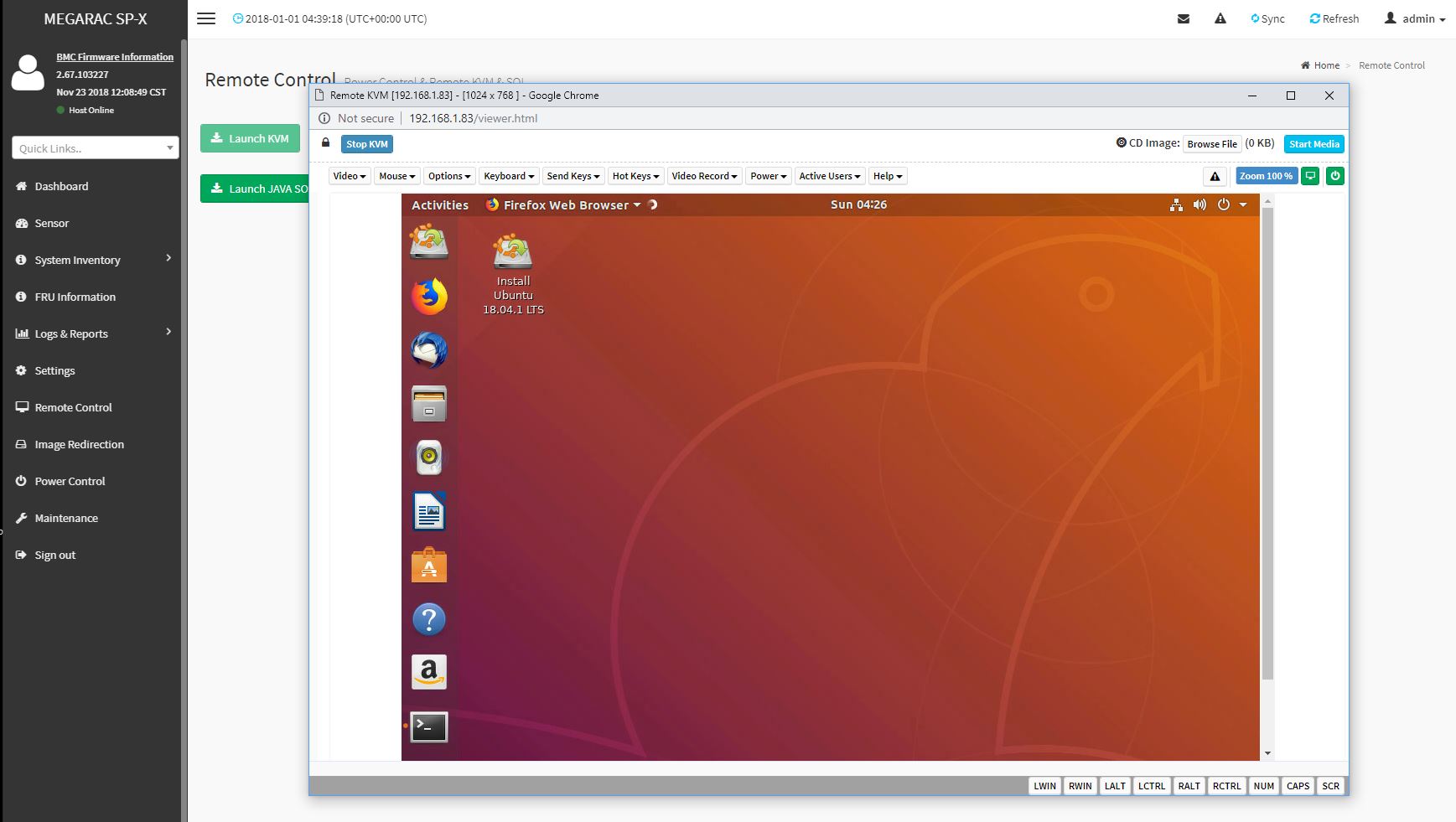
Other standard BMC functions are present. Examples include remote power cycling and even sensor and event logs.
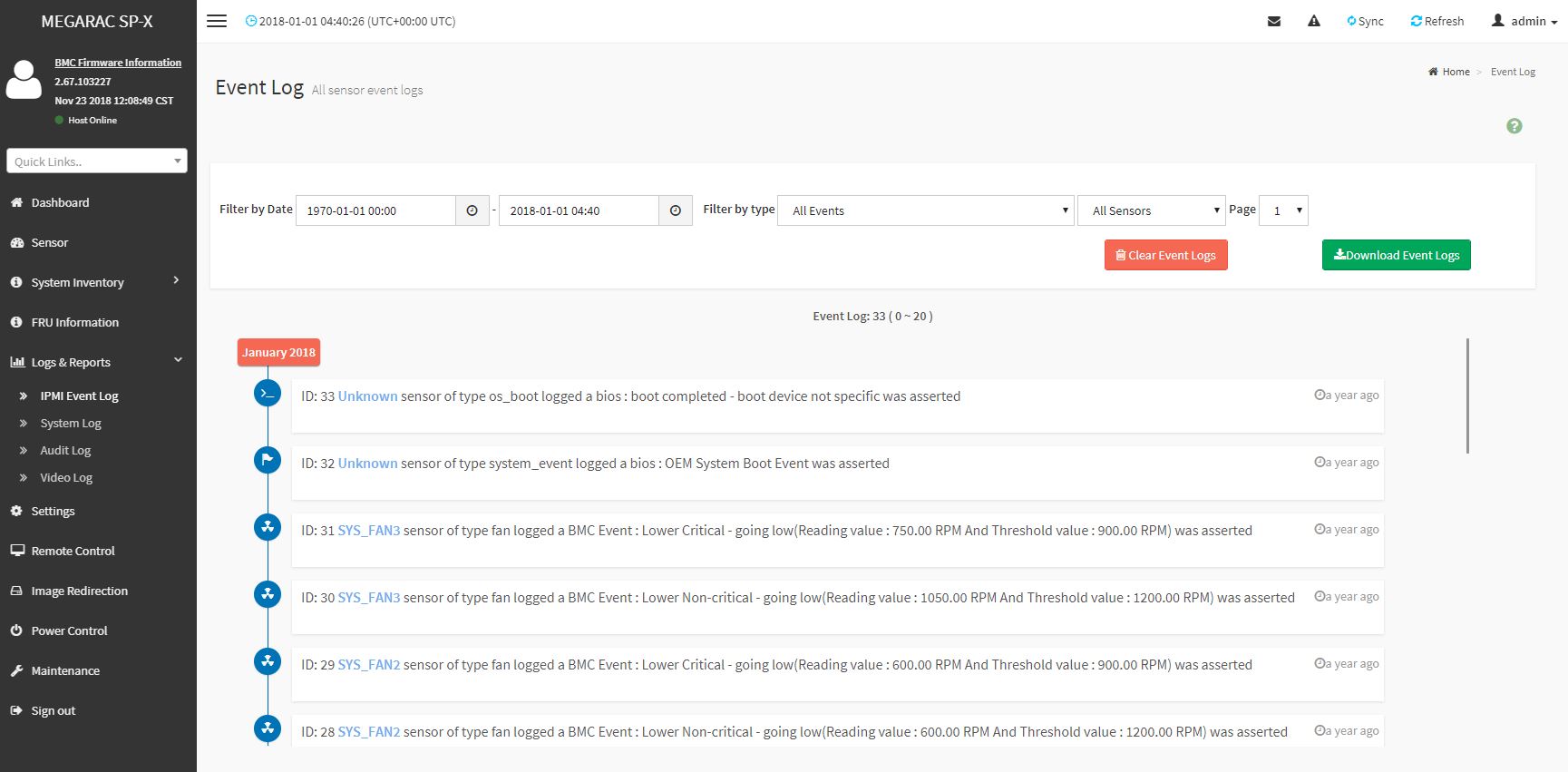
This type of functionality brings the raw data from the server to the IPMI complex which makes it reportable. Gigabyte has its Gigabyte Server Management (GSM) tool for this. Of note, at the time of this writing, the GSM agent still does not work with the Megarac SP-X solution, but Gigabyte plans to update that shortly. Other functionality outside of host agent works with GSM and the new SP-X management on the Gigabyte MZ01 motherboards.
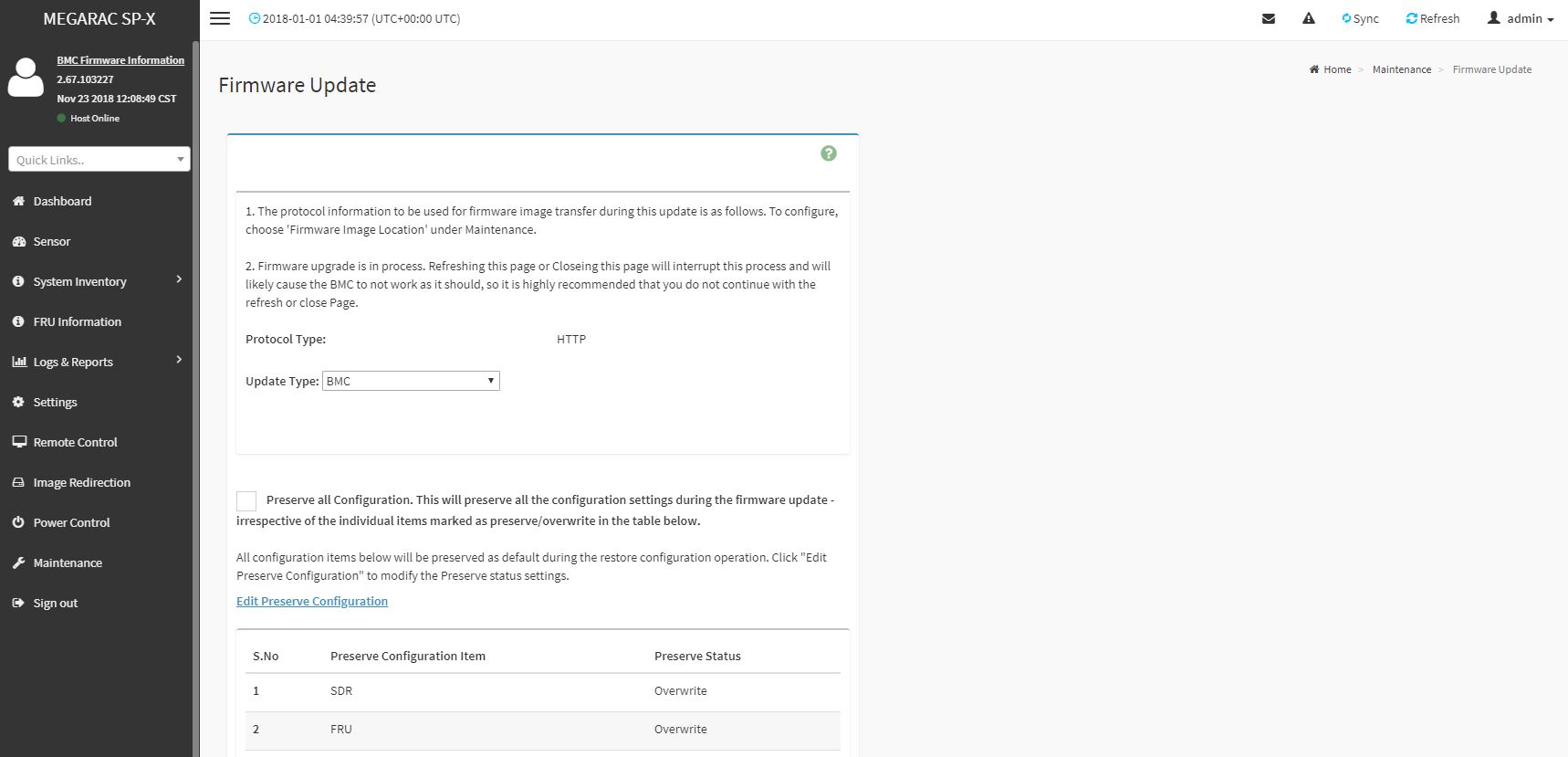
Another nice feature is that the Gigabyte MZ01 series includes remote firmware updates via the web interface and CLI. The remote BIOS upgrade is a feature Supermicro charges a nominal (~$20) license key fee for. Gigabyte includes this as standard functionality.
For the Gigabyte MZ01-CE0, this is a great IPMI management solution for either the server or workstation roles that the platform can fulfill.
Final Words
Overall, we like what Gigabyte did with the MZ01-CE0. The Gigabyte MZ01-CE0 can support up to four GPUs, which is a lot for a single socket AMD EPYC platform. Further, it can support those four GPUs in an ATX form factor which means system designers can use it in a large catalog of existing chassis which we showed with the Ultra EPYC.
Storage on the system is robust. There are sixteen SATA III 6.0gbps ports. These sixteen ports are more than the Intel Xeon Scalable Lewisburg PCH provides (fourteen.) We would have liked to see another M.2 slot. However, there simply is not room.
Networking is the standout for the Gigabyte MZ01-CE0. With the standard dual 1GbE, one may be tempted to use a PCIe expansion port for higher-speed networking. With the MZ01-CE0, one has 10Gbase-T onboard. The onboard 10GbE means that all of the expansion slots can be used for high-value PCIe devices instead of 10GbE NICs.
The Gigabyte MZ01-CE0 as a server platform is excellent. There is not much if anything we would practically change. As a workstation platform, it is serviceable, but system designers will have to design around the limited USB and other peripheral connectivity challenges.
For those readers excited for the Gigabyte MZ01-CE1, we have been testing that motherboard and will have the review coming in the next few weeks.



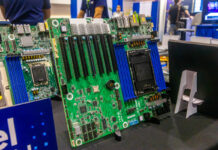
Oooooh, workstation <3
I hope they make PCIe 4.0 version too!
Only issues I see is 4th GPU blocking fan headers located at bottom and only 2* USB root.
Could you cover FAN speed control options? Is there way to make user defined temperature vs. pwm% profile? Or other way to keep it bedroom-silent in idle and temperatures down at full load?
Servethehome there is a real shortage of graphics workstation related benchmarking that is being done on Epyc 1p/2p systems could someone fill the void and do some more Blender 3d related CPU rendering benchmarks on both 1p 1nd 2p Epyc systems.
I’m getting tired of there being only Threadripper related Graphics Workstation related content available and very little Epyc related Graphics workloads benchmarking being done. AMD’s Epyc 7371 is a much higher clocked part just released at the end of 2018 and I’d love to see a similarly clocked 1P 32 core Epyc/Naples part introduced by AMD. Epyc/Naples represents a much better Cost/Feature value than even AMD’s Threadripper platform when one considers the Epyc/Naples Platform’s 128 PCIe lanes and 8 memory channels per socket.
But really More Folks are making use of Blender 3d than ever before and the cost of Blender 3d is a no brainer when paired with some Epyc hardware options that are even better cost/feature deals than any consumer branded processor variants/platforms.
I’ve been looking for this mobo since, say, November. Can’t seem to find it available for purchase [and I tried most of the Gigabyte links too].
I did however find “Gigabyte MZ31-AR0 – 1.0” [cough a*azon, n@w@gg, c.d.w., etc]. Near as I can tell it’s very similar to the MZ01-CE0 … sfp+ ports and 16 dram slots vs. baseT and 8 slots. So perhaps a better option.
This board is screaming as an AIO homelab style server board.
10Gb integrated, 1Gb ports for separate networking. Standard ATX form factor, aka drop into any case you want. The PCIe connectivity gives you the possibility of at-home VDI-style gpu passthrough. 16 Sata seems to be the sweet spot for me personally, and drives are getting larger and more abundant still for the connection type. Plus the onboard m.2 for cache ssd.
Throw in the most important:
management iKVM al-la Supermicro style FREE.
Yeah, this just got added onto the wish list with an Epyc 7371 and 128GB ram. *Drool*
Looking forward to the next board review!
I prefer this one: ASRock Rack EPYCD8-2T
ATX 12” x 9.6”
Single Socket SP3 (LGA4094) support AMD EPYC™ 7000 series processor family
Supports 8 Channels DDR4 2667/2400/2133 RDIMM, LRDIMM 8 x DIMM slots
Supports 8x SATA3 6.0 Gb/s (from 2x mini SAS HD), 1x SATA DOM and 2 x M.2
Supports 2 X 10G LAN by Intel X550
Supports 4 PCIe3.0x 16, 3 PCIe 3.0×8
Supports 2 OCulink
“There are two rear USB 3.0 ports, and internally the USB 3.0 header’s orientation can create some tight fits.”
Maybe buy a 90° adapter for the 19-pin USB3 header, they cost like $5 on ebay for a 5-pack of them.
“We would have liked to see another M.2 slot. However, there simply is not room.”
I’d challenge that. Mini-ITX mobos have resorted to stacking two M.2 on top of each other, this would have been possible here too.
Nice, but waiting for the MZ32-AR0 review: https://forums.servethehome.com/index.php?threads/gigabyte-mz32-ar0.22533/
Of course it won’t be as relevant if AMD jumps to 5.
How do the PCIe Lanes work with Epyc? I never asked that, but are all 32/64 attached to one node or do the nodes each have 16/32? I think that’s kinda important when you want to do something with multiple graphics cards.
Epyc has 128 PCIe lanes connected to 1P.
For 2P, 64 on each node is used as interconnect, so the remaining 2×64=128 lanes are available for peripherals in 2P too.